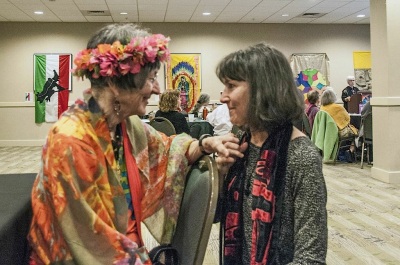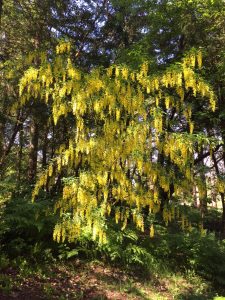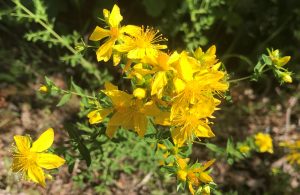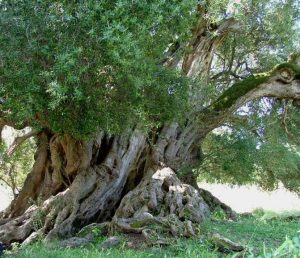 A great sense of joy emerged as I wandered through the forest last weekend, with the midday light of May Eve beaming through. I had entered with a cluttered mind and heart of unfinished projects and unresolved emotions. But after a short while, I realized that pleasure was permeating my senses, awaiting my acknowledgement. I was immersed in the vibrancy of the plants, birds, mosses, and trees. Once I surrendered my thoughts and offered my complete awareness and admiration, a lightness entered my being that lingered the rest of the day. Merisana’s presence. Continue reading
A great sense of joy emerged as I wandered through the forest last weekend, with the midday light of May Eve beaming through. I had entered with a cluttered mind and heart of unfinished projects and unresolved emotions. But after a short while, I realized that pleasure was permeating my senses, awaiting my acknowledgement. I was immersed in the vibrancy of the plants, birds, mosses, and trees. Once I surrendered my thoughts and offered my complete awareness and admiration, a lightness entered my being that lingered the rest of the day. Merisana’s presence. Continue reading
Category Archives: Nature
Miraculous Healer and Demon Chaser: Herb of St. John
Walking down the road along the edge of a forested ravine last week, I was delighted to see the golden flowers of wild St. John’s Wort, an old friend and a plant ally. It blossoms in the fullness of summer, near the summer Solstice and the feast of St. John the Baptist on June 24th. I still remember finding it for the first time on the Island where I live, after two summers of seeking it. I had a dream about it the night before and carried that intention with me as I walked. Discovering the location of medicinal plants seems to require a kind of deep listening and a call from the heart. Continue reading
A Message from My Mother (2014)
Recently I traveled to Texas to receive the Kore Award from the Association of Women in Mythology for my dissertation in Women’s Spirituality at the California Institute of Integral Studies, “The Everyday Spirituality of Women in the Italian Alps: A Trentino American Woman’s Search for Spiritual Agency, Folk Wisdom, and Ancestral Values.”
Shortly after I had arrived in San Antonio, and met my younger sister and her daughter who were in town, we received word that my Mother was not well. Although Mom had been in precarious health throughout the last year, she had pulled through several times. That night in the hotel room, we hoped for the best. The next morning as I lay in my dream state, I felt someone come and lay beside me in bed, compressing the covers, which I have come to understand as a visitation from my Mother. Then the phone rang with the news that Mom had died peacefully that morning. It was comforting for me to be with my sister and niece, especially since we were away from home. Together, we made it through that long, rainy day.
Later that morning, my other siblings, who were gathered around my Mother’s kitchen table, called the hotel room where I was staying. They passed the phone around to each person, voicing their consensus that I should stay in Texas to attend the conference, give my presentation, and receive the award. There was nothing I could do in the next few days if I flew to Denver, they said. All the arrangements had already been made; the funeral wasn’t until the next week. So, reluctantly, I surrendered to their decision. My heart wanted to be with them. However, I stayed, unsure. . . .

When I entered the room of the Matriarchal Studies Conference the next day, I was greeted visually by Lydia Ruyle’s banners, dozens of colorful multicultural expressions of the Divine Mother. And then, there was Lydia herself, her head encircled in a wreath of flowers. I whispered to her what had happened and she gave me a big hug, her own heart fresh from the loss of her brother last year. I looked around the room at women from so many places, and saw the altar to Our Lady of Guadalupe they had created. I knew then that I could stay. The nurturing energy was palpable. I felt the support of my siblings from afar and my Mother’s peaceful state from within. My grief of the past year, in anticipation of losing her, was transformed into something else.The kindness of the women I met there nurtured me.
On Saturday, the board members of ASWM ceremoniously presented me the Kore Award. Inscribed on the plaque, along with the title of my dissertation, was a small but important detail: an accent mark on my name, Mary Beth Mosèr, indicating that my ancestry is from Trentino, a precious detail of cultural specificity told to me by Carmela Mosèr, one of my interviewees, at her kitchen table in a northern Italian village.
The next day I flew to Denver to attend a communal prayer to the Virgin Mary, known as the Rosary, said the night before the funeral in the Roman Catholic rite over the presence of body of the deceased. The church was somber, draped inside with purple cloth for Lent, which seemed fitting. The next morning, with sun shining, we – Mom’s seven children, and most of her twenty grandchildren and twenty-one great grandchildren –attended her funeral at Our Lady of Fatima Church. It was poignant to see the participation of so many family members: my nephews as pallbearers and altar boys, my teenage nieces doing the readings with such poise, the grandchildren and great grandchildren bringing up the gifts of offering as part of the Mass. It was a day filled with a particular kind of Grace, inexplicably joyful. Although I had been unsure if I could read the eulogy I had hand written, I found myself drawing from a deep current, some ancient and sustaining source of strength. Later, at the cemetery, the young children were respectful, yet curious as the casket was lowered into the earth. . . how deep did it go, they wondered. . . and cautiously left their parent’s embrace to peek over the edge. There was an irrepressible life-energy emanating from them. It felt comforting to witness first-hand the continuity of the life cycle manifest in them.
I am grateful for our work in women’s spirituality and for our community, which allowed me to honor my Mother and my ancestors in this way. I felt held in a larger spiritual vessel, secure and grounded in my own experience of the Mystery. I know there are times of sadness ahead.
Since that time, I have been in Colorado, fulfilling my role as Sacred Custodian of my Mother’s possessions, a strange mix of legal responsibility and emotional remembering. Together with my siblings, we are figuring things out. Mom led a simple life over her nine decades, which has simplified the process of dispersion. Her clothes went to the Samaritan House, a homeless shelter where she used to volunteer her time, one of numerous acts of service throughout her life. Her reading/magnification machine has gone to someone else who suffers from macular degeneration, a condition that causes loss of central vision. The beautiful painting of the Virgin Mary that hung near her chair in the living room (interestingly, known as the Madonna of the Chair, by Raphael) went to the woman who brought my Mom Communion every morning when she did not have enough energy to go to church.
I claimed Mom’s cast iron skillets, which she cooked with her entire adult life, and the hand-made rosary she carried in 1987 to Medjugorje, a Marian apparition site in what was then Yugoslavia. There were other items that I brought home, precious to me because I knew the story of them from conversations with my Mother over the years as well as from my “formal” interviews of her for my dissertation. Going through her things became a daily ritual act of discovery, a remembrance of my childhood and the lives of my siblings, cousins, aunts and uncles; of my father who died three decades ago; and my grandparents, two of whom I knew as a child.
On my first night alone in Mom’s home, with her pearl rosary pressed to my heart, I dreamt about the Black Madonna as a massive dark Tree with breasts – evoking the several thousand-year-old wild olive tree we students saw in Sardegna on a study tour with Lucia Chiavola Birnbaum ten years ago. I awoke with a tingling exhilaration as if I were between worlds.
The journey of my dissertation has been marked with deep sorrow and great joy, great loss and incredible insights, as is also true for so many. It felt strange that this honor of my life-work should be coincident with the end of my Mother’s life. Yet with the timing, she seemed to be saying “Go forward. Your work and your life continue on.”
In honor of Lena Pearl Moser, August 7, 1923 – March 26, 2014 and Lydia Ruyle August 4, 1935 – March 26, 2016
This essay originally appeared on the web site Feminism and Religion.
The Golden Chain of May
 As in any meaningful relationship, my initial encounter with a special tree remains in my memory. I first met Maggiociondolo in Trentino, Italy in 1995 while visiting my cousin Angelo. Soon after my arrival, we were walking one day when I saw the most beautiful tree in bloom, heavy with golden yellow blossoms that hung in grape-like clusters. “Che cos’è?” I asked in awe. “What is it?”
As in any meaningful relationship, my initial encounter with a special tree remains in my memory. I first met Maggiociondolo in Trentino, Italy in 1995 while visiting my cousin Angelo. Soon after my arrival, we were walking one day when I saw the most beautiful tree in bloom, heavy with golden yellow blossoms that hung in grape-like clusters. “Che cos’è?” I asked in awe. “What is it?”
“Maggiociondolo,” Angelo replied. It was a difficult word to master, and I had to repeat it several times, until he explained that it was “Maggio” – May, “ciondolo” – pendant. Of course, the pendant of the month of May! May’s Necklace. It felt like this Golden Tree was personally welcoming me to Italy for my extended stay, as I wrote down its name in my spiral notebook of important vocabulary.
The following May, when I was back home in the Northwest US, I was astounded to see this tree, laden with yellow blossoms, growing on the nearby school grounds. It grew on the Island where I lived! I learned that its common name is Golden Chain, although I always greet it by its Italian name, Maggiociondolo. Embodied seasonal memories of delight rush in when I first see the blossoms appear in the canopy of spring growth.
One autumn for my birthday, my friend Theresa gifted me with a Maggiociondolo tree, knowing the story of how much I loved it. With loving intentionality, she planted it so that my kitchen window perfectly frames its seasonal beauty.
When May arrives, the first blossoms begin to form, often coming into fullness right on Theresa’s birthday, when the days are long and warm. It feels meaningful that Maggiociondolo blossoms in the month that Angelo left this world, and that Theresa entered this world. Seeing its flowers fills my heart with golden memories of Trentino, and with gratitude for this living expression of friendship.
The Calling of the Ancestors
 My ancestral calling began decades ago with a curiosity about my heritage. Growing up, I knew only that my four grandparents, immigrants from Europe to “L’America,” were from “The Old Country.” Their early deaths, differences of language, and the pressure for immigrants to the United States in the 20th century to assimilate all contributed to a loss of transmission of cultural identity. As a result, I was raised without an explicit knowledge of my cultural heritage. In my twenties, when I first located my grandparents’ villages in the northern Italian region of Trentino, and walked on the paths there, I felt a stirring of recognition, a genetic memory of a long connection to that land. Some part of me came alive and felt connected in a different way than I had experienced in my Colorado birthplace.
My ancestral calling began decades ago with a curiosity about my heritage. Growing up, I knew only that my four grandparents, immigrants from Europe to “L’America,” were from “The Old Country.” Their early deaths, differences of language, and the pressure for immigrants to the United States in the 20th century to assimilate all contributed to a loss of transmission of cultural identity. As a result, I was raised without an explicit knowledge of my cultural heritage. In my twenties, when I first located my grandparents’ villages in the northern Italian region of Trentino, and walked on the paths there, I felt a stirring of recognition, a genetic memory of a long connection to that land. Some part of me came alive and felt connected in a different way than I had experienced in my Colorado birthplace.
My initial research took the form of on-site genealogical research in the village churches, carefully paging through centuries-old, hand written documents, a thrilling and sometimes frustrating endeavor. Years later, while on a sabbatical to do family research in Italy, I encountered a rich spiritual heritage in the folk Catholicism embodied in the form of the Black Madonna, which became the focus of my graduate studies and master’s thesis. Through mitochondrial DNA testing, I realized more fully that my very body carried the knowledge of my family tree, one that extended much further back than the 500 years I had managed to research so far, to my oldest known mother – and the mother of all humans – in Africa 150,000 years ago. The paths of my research, both genealogical and spiritual, led to a Dark Mother.
After several research trips to document Black Madonna sites throughout Italy, my Ancestral Mothers called to me once again to know more about them. As part of a PhD program in Women’s Spirituality, I researched and studied my cultural history, with a focus on women, spirituality, and folk culture. It has been a deeply meaningful work to discover and uncover the layers of my story across time. Although I lamented having no material possessions of my grandparents, I realized that their values – including caring and sharing, respect for elders, honoring the ancestors, and care for children – have been passed down. These values, still present in the living culture, became evident in my oral interviews in the US and in Italy, and in the folk stories told across the ages.
In the days and months to come I will be sharing more of what I learned. While my stories draw from my specific cultural heritage, viewed from the perspective of a third generation Trentino American woman, I hope they will provide guidance and inspiration, just as I have been informed by the culturally specific stories of others. My cultural history – that is, the story of my culture – roots me to the past, unites me to others, and grounds me for the future. This particularity of my history, one that often has been submerged under other stories, enhances my understanding of self and others. Through this endeavor, I feel connected to the spiral of life.


